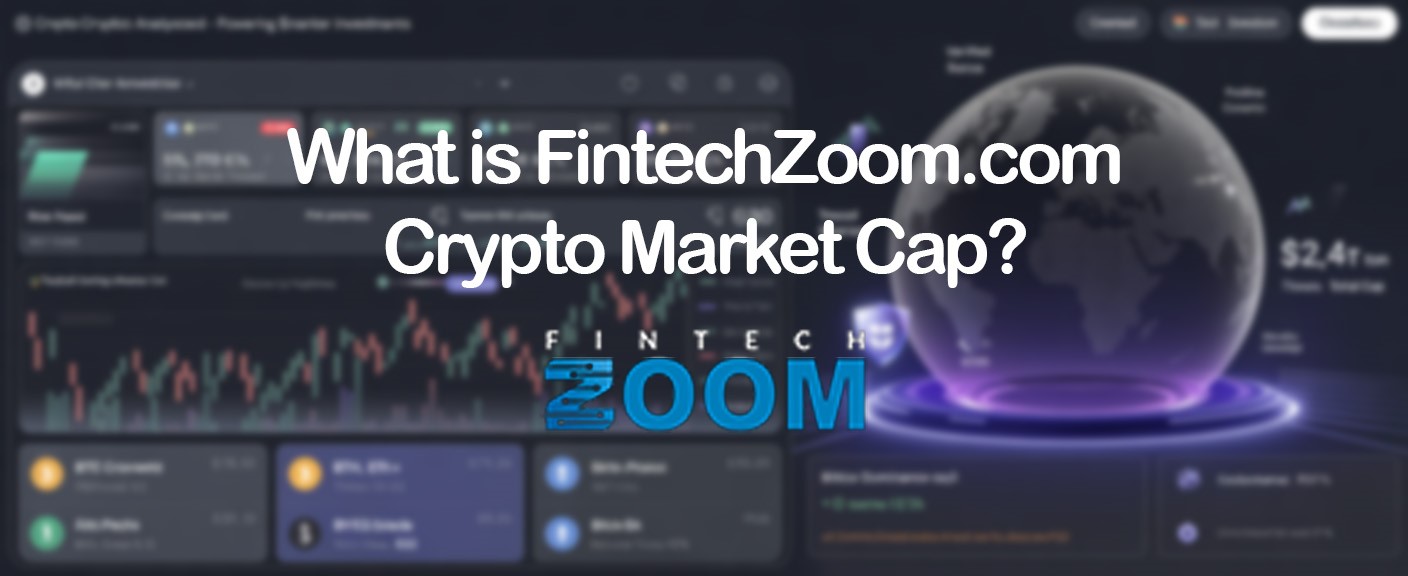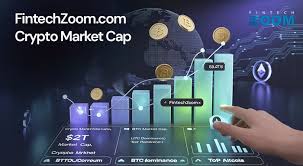
[ad_1]
The world of financial technology, commonly known as FinTech, has evolved tremendously over the past decade. With innovative products disrupting traditional banking and financial services, it’s crucial to explore what’s next for FinTech. This article deeply dives into the insights from FinTech Zoom to address the future landscape, emerging trends, regulatory issues, and the technological integrations that promise to redefine the industry.
1. Introduction to FinTech
FinTech has emerged as one of the most dynamic sectors within the global economy. By leveraging technology to enhance financial services, FinTech companies have effectively made transactions easier, safer, and more efficient. From mobile banking apps to cryptocurrency exchanges, FinTech solutions are reshaping how individuals and businesses interact with their finances.
1.1 The Rise of FinTech
The rise of FinTech can be traced back to the 2008 financial crisis when traditional banks lost consumer trust, leading to a surge in tech-driven alternatives. This shift gave birth to innovative startups and solutions that catered to previously underserved markets. Today, FinTech is not just limited to new startups but has also seen established financial institutions adapting to this rapidly changing environment.
2. Emerging Trends in FinTech
2.1 Artificial Intelligence and Machine Learning
One of the most significant trends in FinTech is the adoption of Artificial Intelligence (AI) and Machine Learning (ML). These technologies help analyze consumer behavior, predict trends, and automate various functions.
-
Personalized Financial Services: AI enables FinTech companies to offer tailored product recommendations based on individual customer behavior.
-
Fraud Detection: Machine learning algorithms detect anomalies in transactions, ensuring higher security standards.
2.2 Blockchain Technology
Blockchain technology is revolutionizing how transactions are conducted. Its decentralized nature enhances transparency and security across various financial services.
-
Smart Contracts: The utilization of smart contracts in the blockchain allows for automated enforcement of agreements, minimizing the need for intermediaries.
-
Cryptocurrency: As cryptocurrencies gain mainstream acceptance, they provide consumers with a new avenue for investment and payment options.
2.3 Open Banking
Open banking allows third-party developers to build financial services around banks, providing consumers with more options and increasing competition.
-
- API Integration: With Application Programming Interfaces (APIs), consumers can access different financial services using a single interface, enhancing their overall experience.
2.4 Digital Wallets
The growth of digital wallets is a response to consumer demand for convenient and efficient payment options. With mobile payments on the rise, digital wallets are expected to become even more prevalent.
-
- Enhanced Security: Digital wallets provide encrypted transactions, ensuring greater security for users.
2.5 Subscription-Based Financial Services
Today’s consumers prefer subscription-based services, and FinTech is aligning itself with this trend. By offering subscription models, companies can generate steady revenue while providing continuous value to consumers.
3. Regulatory Challenges
As FinTech evolves, regulatory challenges remain high on the agenda. Governments and regulatory bodies must balance innovation with consumer protection.
3.1 Regulatory Frameworks
Different countries are experimenting with various regulatory frameworks tailored to their FinTech landscapes.
-
- Sandbox Models: Regulatory sandboxes allow FinTech startups to test their products in a controlled environment, enabling innovation while mitigating risks.
3.2 Compliance and Security
Compliance with existing financial regulations poses a challenge for FinTech startups, especially in areas like data privacy and anti-money laundering (AML).
-
- Data Security: With increased cyber threats, FinTech companies must employ advanced security measures to protect consumer data.
4. The Role of Data in FinTech
Data is the backbone of FinTech, offering insights that drive better decision-making and customer engagement.
4.1 Data Analytics
Data analytics is vital for understanding consumer behavior and preferences. By leveraging analytics, companies can enhance their product offerings.
4.2 Predictive Analytics
Predictive analytics enables FinTech companies to foresee market trends and consumer needs.
-
- Improved Risk Management: This foresight can significantly reduce risks associated with lending and investment.
5. Case Studies: Success Stories in FinTech
5.1 PayPal
PayPal revolutionized online payments by offering a secure platform for users to make transactions with just an email address. Its user-friendly interface and extensive network have made it a staple in the FinTech world.
5.2 Square
Square’s user-friendly point-of-sale systems have transformed how small businesses manage transactions. Providing small merchants with easy access to payment processing tools has significantly boosted their competitiveness.
5.3 Robinhood
Robinhood changed the investment landscape by allowing users to trade stocks without incurring commission fees. This has democratized access to financial markets and attracted a younger demographic.
6. Technological Innovations That Drive FinTech
6.1 Cloud Computing
Cloud technology offers scalable and flexible solutions for financial institutions, allowing them to store vast amounts of data securely while also enhancing accessibility.
6.2 Internet of Things (IoT)
IoT integrates physical devices with digital systems, providing valuable data for financial services.
-
- Smart Appliances: Imagine a refrigerator that automatically orders groceries when supplies are low using an integrated payment system.
6.3 Biometric Authentication
Biometrics offer an additional layer of security, ranging from fingerprint scanning to facial recognition. This technology fosters trust and mitigates risks associated with unauthorized access.
7. Consumer Behavior: The Shift to Digital
7.1 Changing Demographics
As Millennials and Gen Z enter the economic stage, they bring significant changes to consumer behavior. These digital natives expect seamless, tech-driven financial services.
7.2 Financial Literacy and Education
With the rise of FinTech, there is also a need for enhanced financial literacy. Companies can capitalize on this by providing educational resources and tools, empowering users with knowledge.
8. The Future of FinTech
The future of FinTech is awe-inspiring, with countless possibilities on the horizon.
8.1 Integrating Advanced Technologies
-
Quantum Computing: Though still in its infancy, quantum computing has the potential to solve complex financial problems, optimizing portfolio management and risk assessment.
-
5G Technology: The rollout of 5G will usher in a new era of connectivity, providing immediate access to financial services.
8.2 Sustainability and Ethical FinTech
Consumers are increasingly focusing on sustainability. FinTech companies need to consider the environmental and social impact of their products.
-
- Green Financing: Providing loans and investments that fund environmentally-friendly projects is one approach to fostering sustainable growth in FinTech.
9. FAQs
What is FinTech?
FinTech, or financial technology, refers to the integration of technology into offerings by financial services companies to improve their use of financial services.
How does AI impact FinTech?
Artificial Intelligence impacts FinTech by enabling personalized experiences, improving fraud detection, and automating customer service processes.
What are digital wallets?
Digital wallets are electronic applications that allow users to store and manage their payment information, enabling convenient digital transactions.
What are the main regulatory challenges in FinTech?
Main regulatory challenges in FinTech include compliance with existing financial laws, data privacy regulations, and anti-money laundering requirements.
How is data used in FinTech?
Data in FinTech is used for analytics, risk management, and consumer profiling, helping companies improve their services and engage better with users.
What can we expect from FinTech in the future?
In the future, we expect deeper integrations of AI, more secure payment systems, greater emphasis on sustainability, and the use of advanced technologies like quantum computing.
Conclusion
As we look towards the future of FinTech, it is clear that innovation will continue to be the driving force behind the evolution of financial services. With many technological advancements and a growing focus on consumer needs, the FinTech landscape presents exciting opportunities and challenges. Companies that stay ahead of the curve by embracing change and adapting to regulatory requirements will not only survive but thrive as leaders in this dynamic market. The insights gathered from FinTech Zoom indicate that the next decade will be transformational, setting the stage for a digital-first future in the financial world. In this ever-evolving landscape, staying informed and adaptable will be key to success.
[ad_2]






